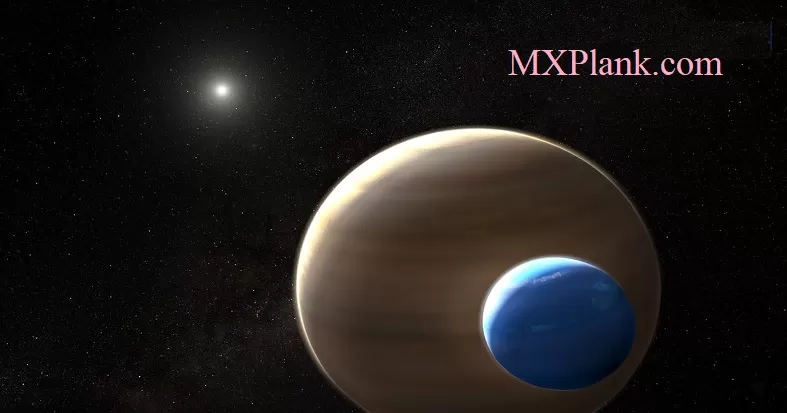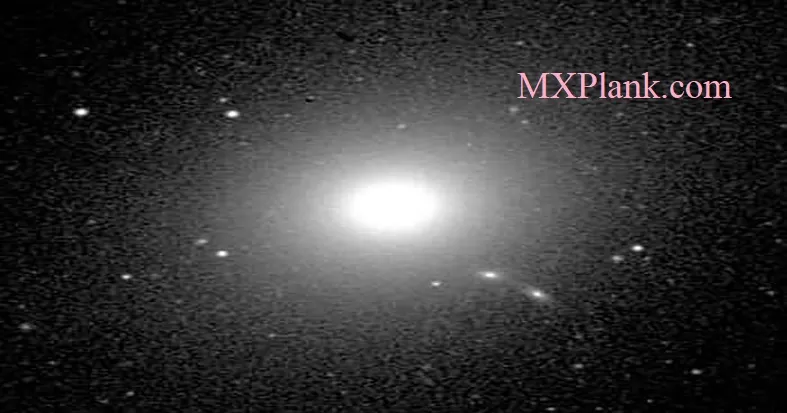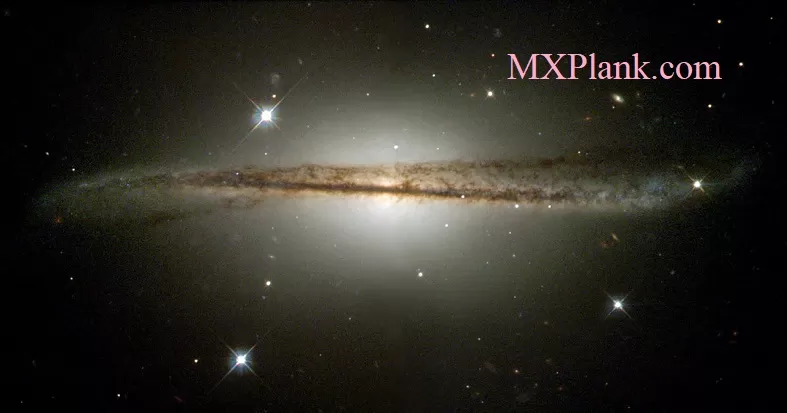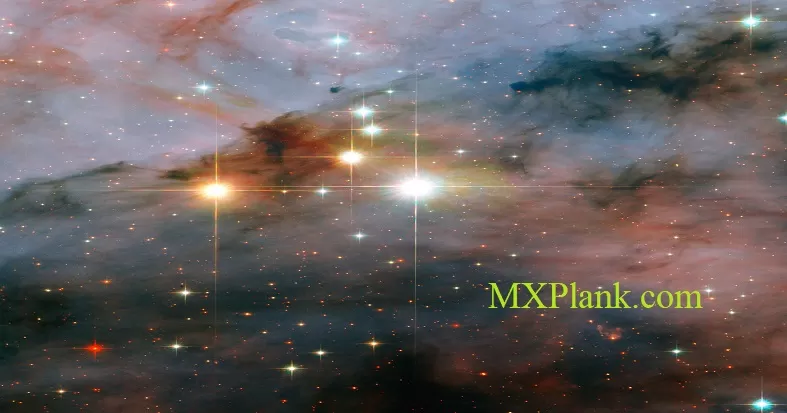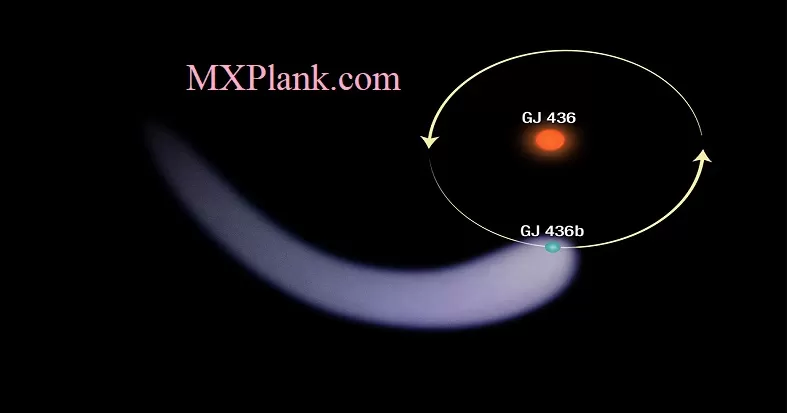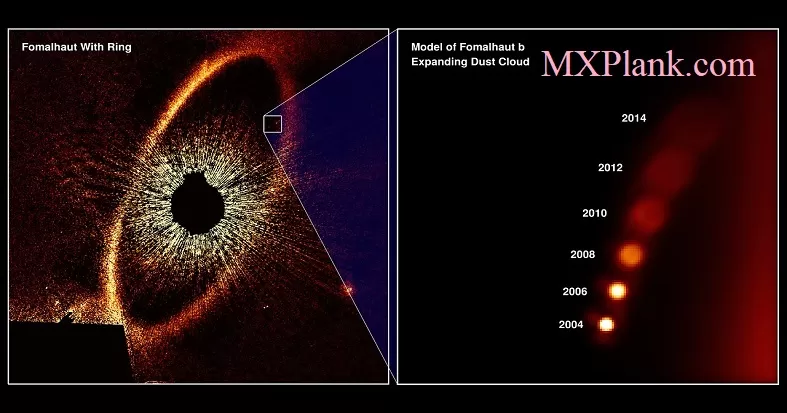HUBBLE MEASURES ATMOSPHERIC STRUCTURE OF EXTRASOLAR PLANET HD 209458B
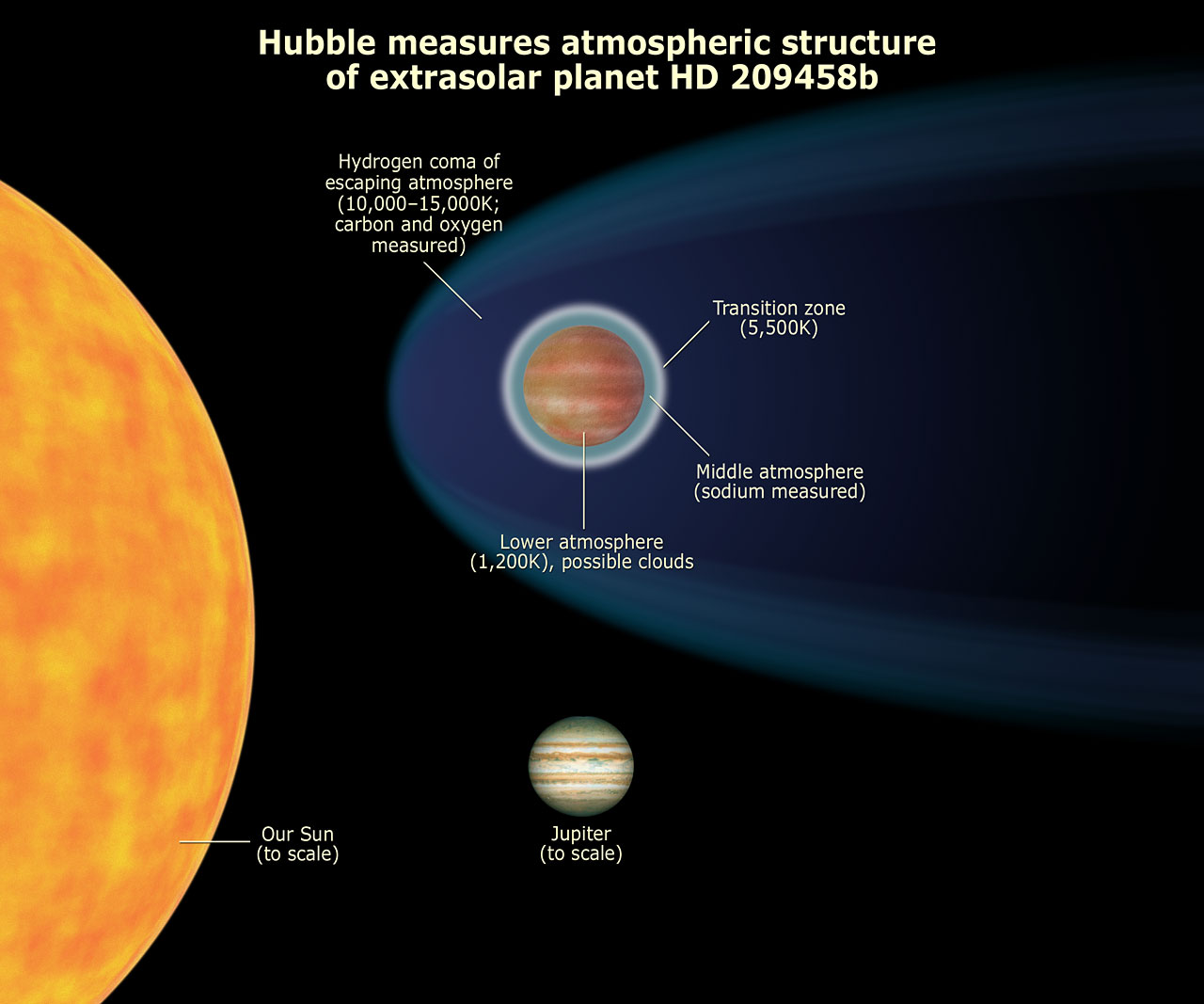
Image credit: ESA
The powerful vision of NASA's Hubble Space Telescope has allowed astronomers to study for the first time the layer-cake structure of the atmosphere of a planet orbiting another star. Hubble discovered a dense upper layer of hot hydrogen gas where the super-hot planet's atmosphere is bleeding off into space.
HD 209458b, the first extrasolar planet detected by its transit across its star's face and the first extrasolar planet whose mass was directly measured. HD 209458 is a seventh-magnitude star about 150 light-years away in the constellation Pegasus. The star, which has physical characteristics similar to those of the Sun, was shown in late 1999 to have a planet, HD 209458b, by detection of the planet's gravitational effects on the star's motion. Shortly afterward astronomers independently confirmed the planet's presence by observing that HD 209458 changed in brightness with the same 3.5-day period predicted from the discovery data for the planet's orbit. Although HD 209458b could not be seen directly, its passages between its star and Earth provided important information about its physical properties and atmosphere that was not otherwise available.
Observations of spectral lines of carbon monoxide in HD 209458b's atmosphere showed that winds with speeds of thousands of kilometres per hour travel from the planet's dayside to its nightside. The same spectral lines were used to determine the speed with which HD 209458b travels in its orbit and thus to directly determine its mass. HD 209458b is 1.38 times the size of Jupiter but has only 0.69 times its mass. It orbits surprisingly close to the star-about 9 stellar radii.
The upper atmosphere of the exoplanet HD 209458 b revealed by the sodium D lines
Temperature-pressure profile, ionization layer, and thermosphere
A complete reassessment of the Hubble Space Telescope (HST) observations of the transits of the extrasolar planet HD 209458 b has provided a transmission spectrum of the atmosphere over a wide range of wavelengths. Analysis of the NaI absorption line profile has already shown that the sodium abundance has to drop by at least a factor of ten above a critical altitude. Here we analyze the profile in the deep core of the NaI doublet line from HST and high-resolution ground-based spectra to further constrain the vertical structure of the HD 209458 b atmosphere. With a wavelength-dependent cross section that spans more than 5 orders of magnitude, we use the absorption signature of the NaI doublet as an atmospheric probe.The NaI transmission features are shown to sample the atmosphere of HD 209458 b over an altitude range of more than 6500 km, corresponding to a pressure range of 14 scale heights spanning 1 millibar to 10-9 bar pressures. By comparing the observations with a multi-layer model in which temperature is a free parameter at the resolution of the atmospheric scale height, we constrain the temperature vertical profile and variations in the Na abundance in the upper part of the atmosphere of HD 209458 b. We find a rise in temperature above the drop in sodium abundance at the 3 mbar level. We also identify an isothermal atmospheric layer at 1500 ∓ 100 K spanning almost 6 scale heights in altitude, from 10-5 to 10-7 bar. Above this layer, the temperature rises again to K at ~10-9 bar, indicating the presence of a thermosphere.
The resulting temperature-pressure (T-P) profile agrees with the Na condensation scenario at the 3 mbar level, with a possible signature of sodium ionization at higher altitudes, near the 3 x 10-5 bar level. Our T-P profile is found to be in good agreement with the profiles obtained with aeronomical models including hydrodynamic escape.
Video credit: ESA
Astronomers have used the NASA/ESA Hubble Space Telescope and the NASA Spitzer Space Telescope to study the atmospheres of ten hot, Jupiter-sized exoplanets in detail, the largest number of such planets ever studied. The team was able to discover why some of these worlds seem to have less water than expected - a long-standing mystery. The results are published in "Nature".
To date, astronomers have discovered nearly 2000 planets orbiting other stars. Some of these planets are known as hot Jupiters - hot, gaseous planets with characteristics similar to those of Jupiter. They orbit very close to their stars, making their surface hot, and the planets tricky to study in detail without being overwhelmed by bright starlight.
Due to this difficulty, Hubble has only explored a handful of hot Jupiters in the past, across a limited wavelength range. These initial studies have found several planets to hold less water than expected (opo1436a, opo1354a).
Now, an international team of astronomers has tackled the problem by making the largest ever study of hot Jupiters, exploring and comparing ten such planets in a bid to understand their atmospheres [1]. Only three of these planetary atmospheres had previously been studied in detail; this new sample forms the largest ever spectroscopic catalogue of exoplanet atmospheres.
The team used multiple observations from both the NASA/ESA Hubble Space Telescope and NASA's Spitzer Space Telescope. Using the power of both telescopes allowed the team to study the planets, which are of various masses, sizes, and temperatures, across an unprecedented range of wavelengths [2].
"I'm really excited to finally 'see' this wide group of planets together, as this is the first time we've had sufficient wavelength coverage to be able to compare multiple features from one planet to another," says David Sing of the University of Exeter, UK, lead author of the new paper. "We found the planetary atmospheres to be much more diverse than we expected."
All of the planets have a favourable orbit that brings them between their parent star and Earth. As the exoplanet passes in front of its host star, as seen from Earth, some of this starlight travels through the planet's outer atmosphere. "The atmosphere leaves its unique fingerprint on the starlight, which we can study when the light reaches us," explains co-author Hannah Wakeford, now at NASA Goddard Space Flight Center, USA.
These fingerprints allowed the team to extract the signatures from various elements and molecules - including water - and to distinguish between cloudy and cloud-free exoplanets, a property that could explain the missing water mystery.
The team's models revealed that, while apparently cloud-free exoplanets showed strong signs of water, the atmospheres of those hot Jupiters with faint water signals also contained clouds and haze - both of which are known to hide water from view. Mystery solved!
"The alternative to this is that planets form in an environment deprived of water - but this would require us to completely rethink our current theories of how planets are born," explained co-author Jonathan Fortney of the University of California, Santa Cruz, USA. "Our results have ruled out the dry scenario, and strongly suggest that it's simply clouds hiding the water from prying eyes."
The study of exoplanetary atmospheres is currently in its infancy, with only a handful of observations taken so far. Hubble's successor, the James Webb Space Telescope, will open a new infrared window on the study of exoplanets and their atmospheres.
Credit:
NASA/ESA and The Hubble Heritage Team (STScI/AURA)
NASA/ESA and The Hubble Heritage Team (STScI/AURA)

